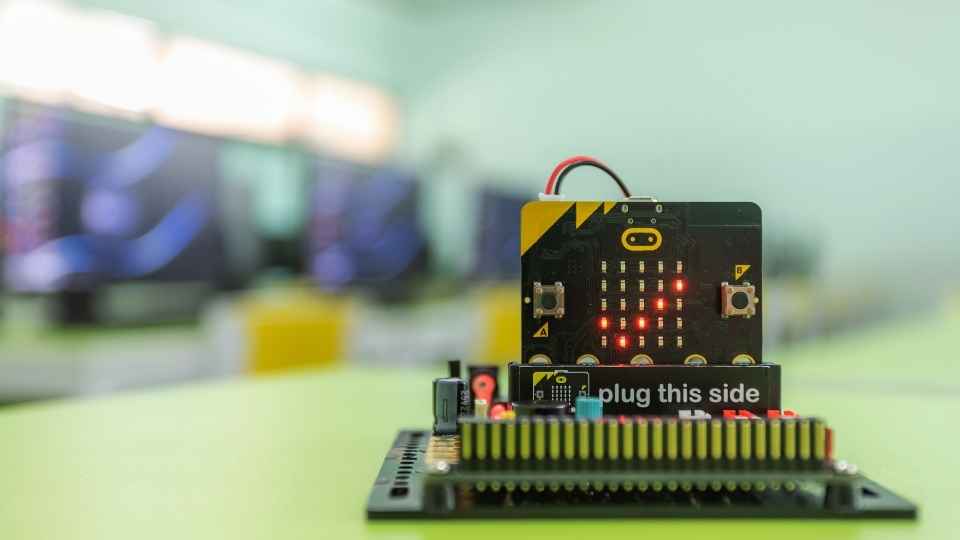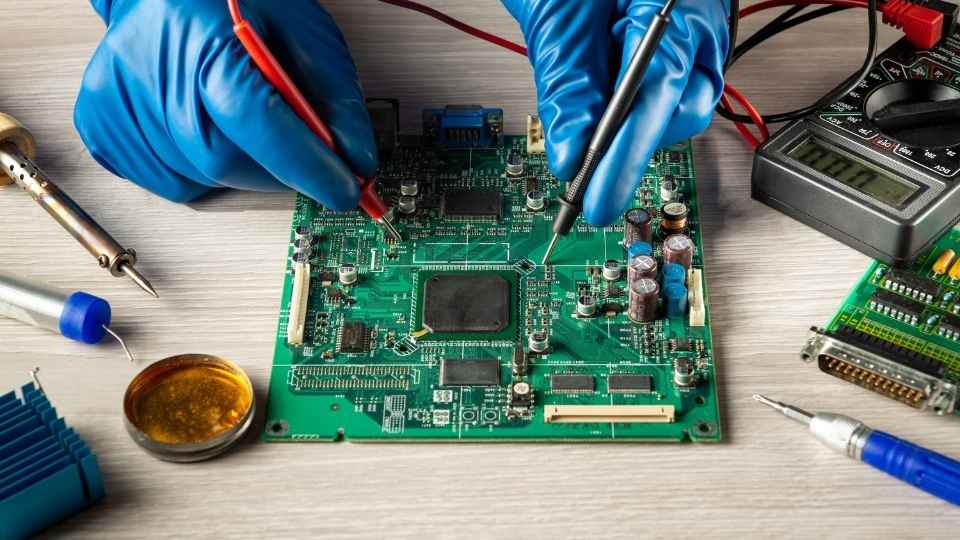
Imagine a world where everyday objects seamlessly communicate with each other, responding to our needs and enhancing our lives in ways we never thought possible. This is the reality of modern electronics, thanks to the innovative field of embedded systems development.
At the heart of this revolution lies firmware - a vital component that acts as the bridge between hardware and software.
In this article, we delve into the transformative power of firmware and explore how it is reshaping our technological landscape.
Key Takeaways
- Firmware serves as the operating system for embedded systems, providing instructions for hardware devices and allowing them to interact with external inputs and outputs.
- Firmware updates can enhance device performance, security, and functionality by optimizing algorithms, adding new features, and incorporating enhanced security measures.
- Challenges in firmware development include fitting required software components within memory limitations, handling real-time responses, ensuring compatibility between hardware configurations, and minimizing memory usage while maintaining functionality.
- Future trends in firmware for embedded systems include increasing connectivity and integration with other devices, incorporating robust security measures, using modular and scalable architectures, handling complex networking protocols, and creating flexible solutions that can easily adapt to changing requirements.
The Role of Firmware in Embedded Systems
Firmware plays a crucial role in the functionality and performance of embedded systems by acting as the bridge between hardware and software components. It is a type of software that is specifically designed to be installed on hardware devices, providing instructions for their operation. In essence, firmware serves as the operating system for these embedded systems, enabling them to perform their intended tasks.
Embedded systems are found in various applications such as consumer electronics, automotive systems, medical devices, and industrial equipment. The firmware allows these devices to interact with external inputs and outputs while also managing internal processes efficiently.
Furthermore, firmware can be updated or upgraded to enhance the capabilities of an embedded system or fix any bugs or vulnerabilities. This flexibility ensures that embedded systems can adapt to changing needs and technologies.
Advancements in Firmware Technology
With the rapid advancements in technology, the evolution of firmware has revolutionized the functionality and capabilities of electronic devices. Firmware, which is embedded software that controls the operation of hardware, has become more powerful and versatile than ever before.

Here are three ways in which advancements in firmware technology are transforming modern electronics:
Increased Performance: Firmware updates can enhance device performance by optimizing algorithms, improving power management, and enabling faster processing speeds. This allows users to experience smoother and more efficient operations.
Enhanced Security: The latest firmware technologies incorporate robust security measures such as encryption and authentication protocols to protect devices from cyber threats. This provides users with peace of mind knowing their personal data is secure.
Expanded Functionality: Firmware updates can add new features and functionalities to electronic devices without requiring physical modifications or upgrades. This gives users the freedom to enjoy a wider range of capabilities without having to invest in new hardware.
Overall, advancements in firmware technology have empowered users with greater freedom, improved performance, enhanced security, and expanded functionalities in their electronic devices.
Impact of Firmware on Modern Electronics
The rapid evolution of technology has brought about a significant transformation in the functionality and capabilities of electronic devices. Firmware, in particular, plays a crucial role in this transformation. It is the software that is embedded into the hardware of these devices, enabling them to perform specific functions. With advancements in firmware technology, modern electronics have become more intelligent and efficient.
Firmware allows for greater customization and flexibility in device operations, providing users with more freedom to personalize their experience. It enables seamless integration between hardware components, maximizing performance and reliability. Moreover, firmware updates can enhance device security, fix bugs, and introduce new features.

However, as firmware becomes increasingly complex and multifunctional, challenges arise for embedded systems developers. These include ensuring compatibility across different platforms and devices, managing memory constraints efficiently, optimizing power consumption, and addressing security vulnerabilities.
Transitioning into the subsequent section about 'challenges in firmware development for embedded systems', these complexities necessitate a careful approach to ensure smooth operation while overcoming technical obstacles.
Challenges in Firmware Development for Embedded Systems
Developing firmware for embedded devices presents a unique set of obstacles that require careful attention and strategic planning. The challenges faced by firmware developers in the realm of embedded systems are numerous and complex.
Here are three key difficulties that evoke a sense of frustration, determination, and excitement among developers:
Memory limitations: Embedded devices often have limited memory resources, making it challenging to fit all the required software components within these constraints. Developers must optimize their code to minimize memory usage while still maintaining functionality.
Real-time responsiveness: Many embedded systems require real-time responses to external events or inputs. Firmware must be designed to handle these events promptly and efficiently, ensuring smooth operation without any delays or glitches.
Hardware compatibility: Firmware development for embedded systems involves working closely with specific hardware components and interfaces. Ensuring compatibility between different hardware configurations can be a time-consuming process that requires deep technical knowledge.

Despite these challenges, firmware development for embedded systems offers immense opportunities for innovation and pushing the boundaries of technology. With careful planning and expertise, developers can overcome these obstacles to create robust and efficient firmware solutions that empower freedom in modern electronics.
Future Trends in Firmware for Embedded Systems
One of the key aspects to consider when exploring future trends in firmware for embedded systems is the increasing demand for connectivity and integration with other devices. As technology continues to advance, there is a growing need for embedded systems to seamlessly communicate with each other and with external devices. This requires firmware that can handle complex networking protocols and support various communication technologies such as Wi-Fi, Bluetooth, and cellular networks.
Another important trend in firmware development is the focus on security. With the rise of IoT (Internet of Things) devices, there is an increased risk of cyber-attacks and unauthorized access to sensitive data. Firmware developers are now incorporating robust security measures into their designs, including encryption algorithms, secure boot procedures, and secure firmware updates.
Furthermore, there is a shift towards more modular and scalable firmware architectures. This allows for easier integration of new features and functionalities without requiring a complete redesign of the system. By employing modular firmware architectures, developers can create flexible solutions that can be easily adapted to meet changing requirements.
Frequently Asked Questions
What Is the Difference Between Firmware and Software in Embedded Systems?
Firmware and software in embedded systems differ in their purpose and implementation. Firmware is the code stored permanently on a hardware device, while software refers to programs that run on a computer.
How Does Firmware Affect the Power Consumption of Electronic Devices?
Firmware significantly impacts the power consumption of electronic devices. By optimizing algorithms, managing hardware resources efficiently, and implementing advanced power-saving techniques, firmware developers can greatly enhance the energy efficiency and overall performance of modern electronics.
Can Firmware Be Updated or Upgraded in Embedded Systems?
Yes, firmware can be updated or upgraded in embedded systems. This allows for improvements, bug fixes, and new features to be implemented without needing to replace the entire hardware component.

What Are Some Common Challenges Faced by Firmware Developers in the Field of Embedded Systems?
Some common challenges faced by firmware developers in the field of embedded systems include ensuring compatibility with hardware, optimizing performance and memory usage, managing power consumption, and troubleshooting issues related to real-time constraints.
How Does Firmware Contribute to the Security of Modern Electronic Devices?
Firmware plays a crucial role in ensuring the security of modern electronic devices. By providing secure boot mechanisms, encryption algorithms, and authentication protocols, firmware safeguards against unauthorized access and protects sensitive data from potential threats.
 Basic Electronics ConceptsEssential ToolsCircuit Design BasicsMicrocontrollersDIY Electronics ProjectsRoboticsPrivacy PolicyTerms And Conditions
Basic Electronics ConceptsEssential ToolsCircuit Design BasicsMicrocontrollersDIY Electronics ProjectsRoboticsPrivacy PolicyTerms And Conditions
